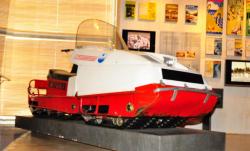 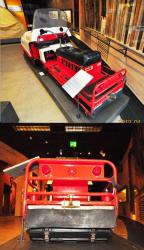 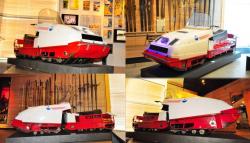 |
At the corner of a picture gallery of forest issues, a friendly snowmobile, yet little known, appears : the Myski (photos 1-3), created by Esa Juntura, having the advantage over its competitors to ride other than on snow, especially in summer, because devoid of skis. It has three tracks two steering to the front and an articulation in yaw, pitch and perhaps in roll ? Made by Pentti Oululainen Karhi in the late 60s, a first series was produced until 1970 and an improved set of 200 copies was produced between 1970 and 1992, used mainly by government agencies. Fitted with Rotax 503 of 40 hp allowing a speed of 50 km / h and a mass of 370 kg, the engine and transmission included a controller to the front and the drive was through the joint between the front and rear sections.
Here is a comment of the Museum of Lusto Manager, Eero Knaapi : 'Myski turns between front and rear part when driving. It has all three track (chain/wheel) drive, one in rear part and twin in front. Myski is quite heavy machine but easy to drive in deep snow, I´ve tested before we took it to our collections as a non-use object. Of course it is not a circus – snowmobile, main purpose was heavy load work. When using Finnish Forest and Park Service drove it via lakes during wintertime when occupying heavy tools and e.g. firewood to renthouses on islands far inland waters'.
|
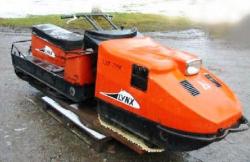 |
Myski Lynx TPK 635 snowmobile. 10 units were made in 1973 and 16 were made at Vela in 1975. After, they took the name of Myski. From : http://www.teolehtimaki.fi/files/Lynx%201975.pdf
|
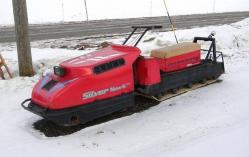 |
Myski Silver Hawk 1300 Premium snowmobile. From : http://www.nettimoto.com/muu-merkki/muu-malli/1284993
|
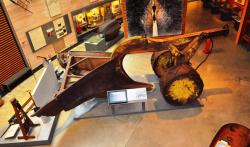
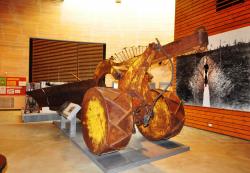
|
Appears then the enormous Valtaoja drawn plow (photos 6-8) in the early 1950s, weighing 5.5 t with wheels of 2.4m diameter. It allowed digging drainage ditches by 0.9 m deep. Impressive !
|
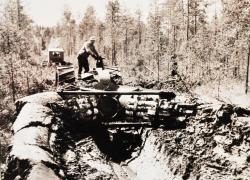 |
Valtoaja Plow at work in 1950. Pict from Lusto Museum Collection.
|
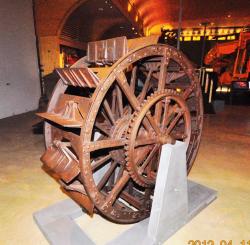 |
But it is only once in the Iso-Samperi big hall, built in 2008, that are grouped large forestry machines dating back to the 60s and beyond.
Wheel Hugo Richard Sandberg (photo9), director of the Kemi Corporation, and Julius Miettinen, engineer, designed a 32 hp vehicle in 1910-11, with this paddlewheel on the back intended to push the sled loaded with wood. No result : the wheel, unloaded, turned on the spot. Loaded, it would be buried. Only the wheel survived.
|
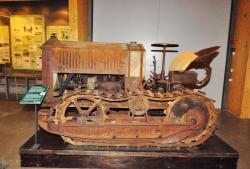 |
Cletrac Model W caterpillar tractor made by Cleveland Tractor Company, Ohio, from 1919 to 1932. In the early 1920s, many of these tractors were imported to Finland (and Europe) but their use in timber transportation was more expensive than traditional transport. The mass of the tractor, according to sources, ranging from 1990 to 2170 kg, speed 4.5 km / h, 28 hp. High tech in the 20s !
|
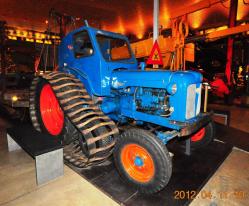 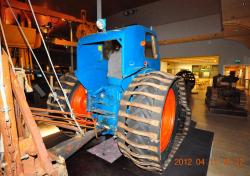 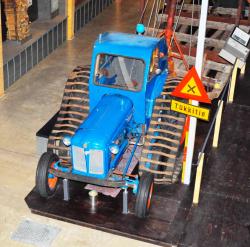 |
Fordson Major (photos 11 to 13), 1957 farm tractor with the TTA (Tractor Tracking Attachment), semi-crawler for agricultural tractor invented and manufactured by Bombardier Inc., Quebec, between 1949 and 1952 and whose license was sold to the world. In fact, these tracks were locally manufactured under license. This system of semi-tracked, simple, significantly increased traction in snowy terrains and was used extensively in the 50s for forestry work. Driver was protected by a cab.
|
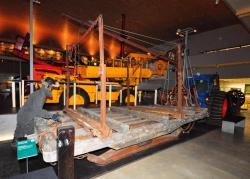 |
The forest sled (photo 14) coupled behind the Fordson Major tractor was equipped with a suspension and had a semi-automatic loading system. Nevertheless, an assistant would help with loading and unloading. The sledge rested partially on the rear of the tractor to increase traction of the tracks.
|
|
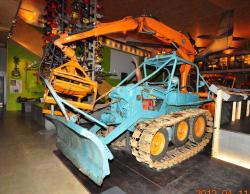
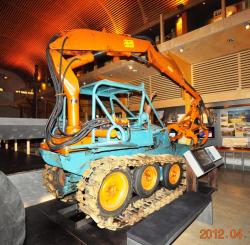 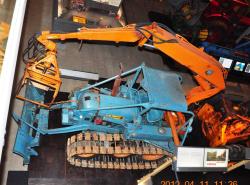
|
Caterpillar BM / Ösa Bamsee of Bolinders Munktell (photos 15 to 17) of Sweden, became Volvo after 1960, of which 700 units were built between 1957 and 1962, was the first tractor of the Nordic Countries. It could be equipped with a trailer or sled : 29 hp, mass 2700 kg, equipped with Alfa-tracks. Very reliable, a more improved version was launched in the early 60s and widespread in Scandinavia : the new, heavier was 3500 kg with a 33 hp engine featured hydraulic loading means. The Caterpillar Volvo BM SM-360 (Big Bear) in 1964 and then replaced in 1966, by a smaller version of the Volvo, the SM-460 (Little Bear) was launched.
|

















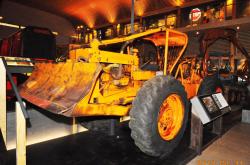
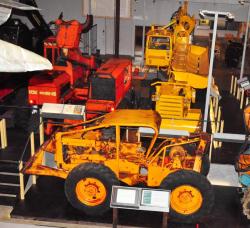
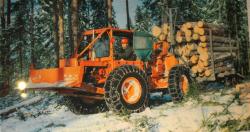
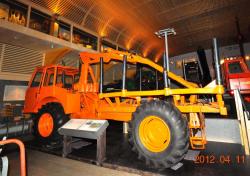
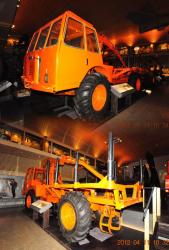
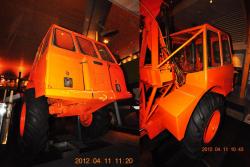
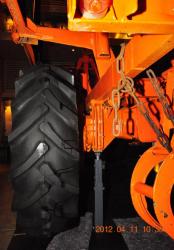
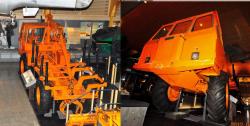
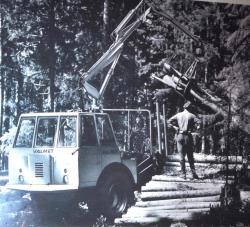
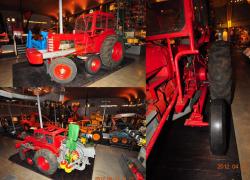
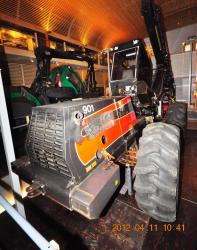
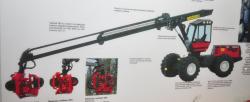
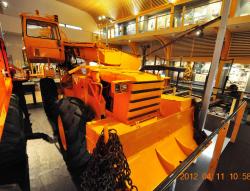
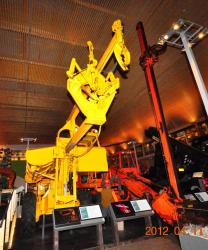
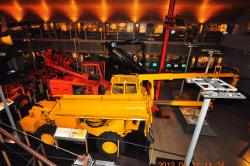
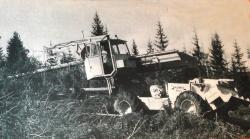
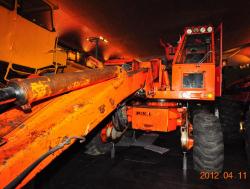
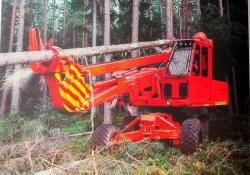
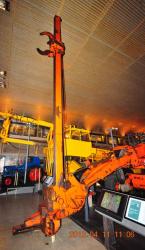
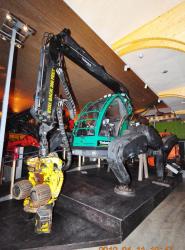
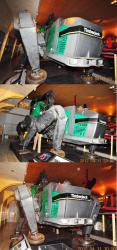
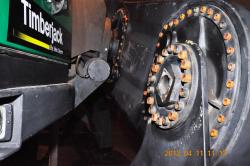
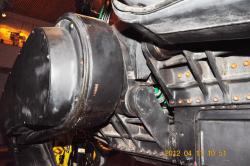
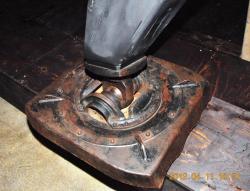
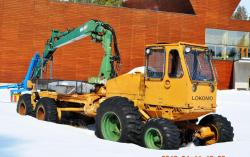
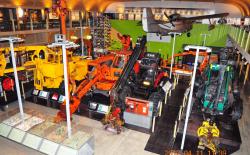

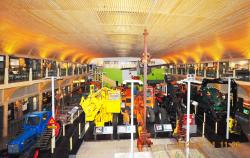
 Français
Français
 English
English
 Español
Español
 Italiano
Italiano
 Deutsch
Deutsch
 Nederlands
Nederlands
 Portuguesa
Portuguesa